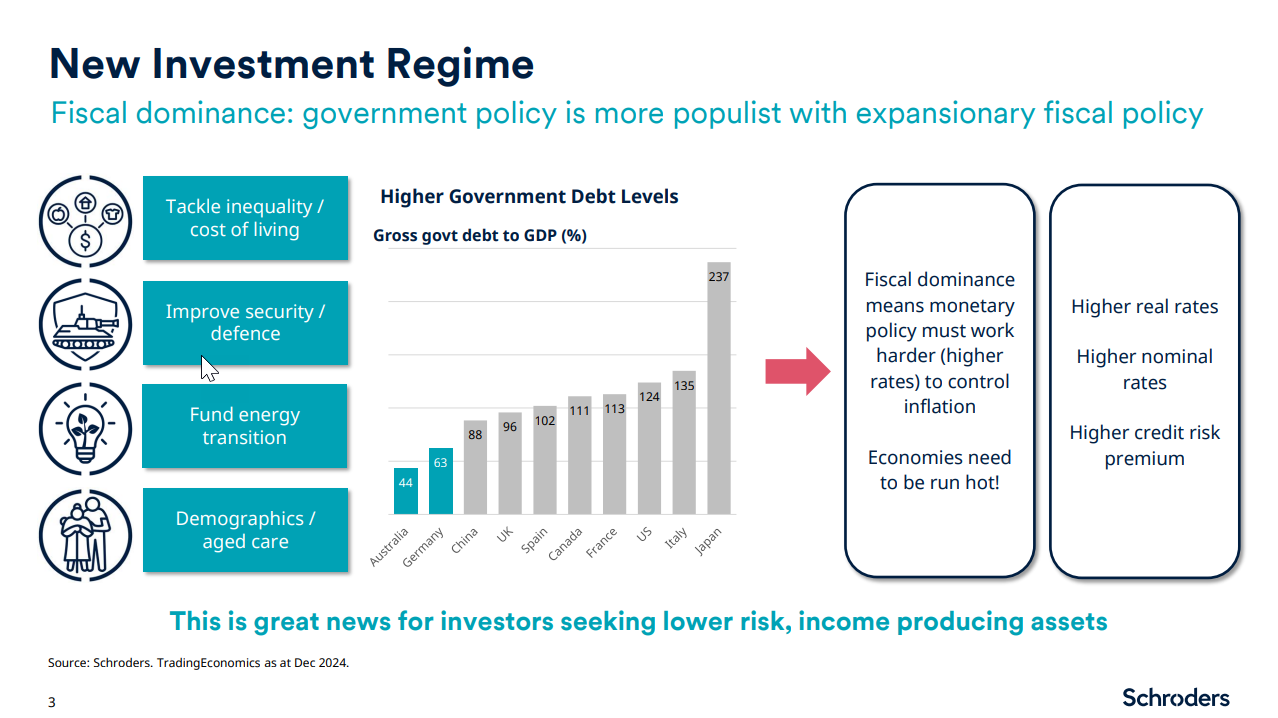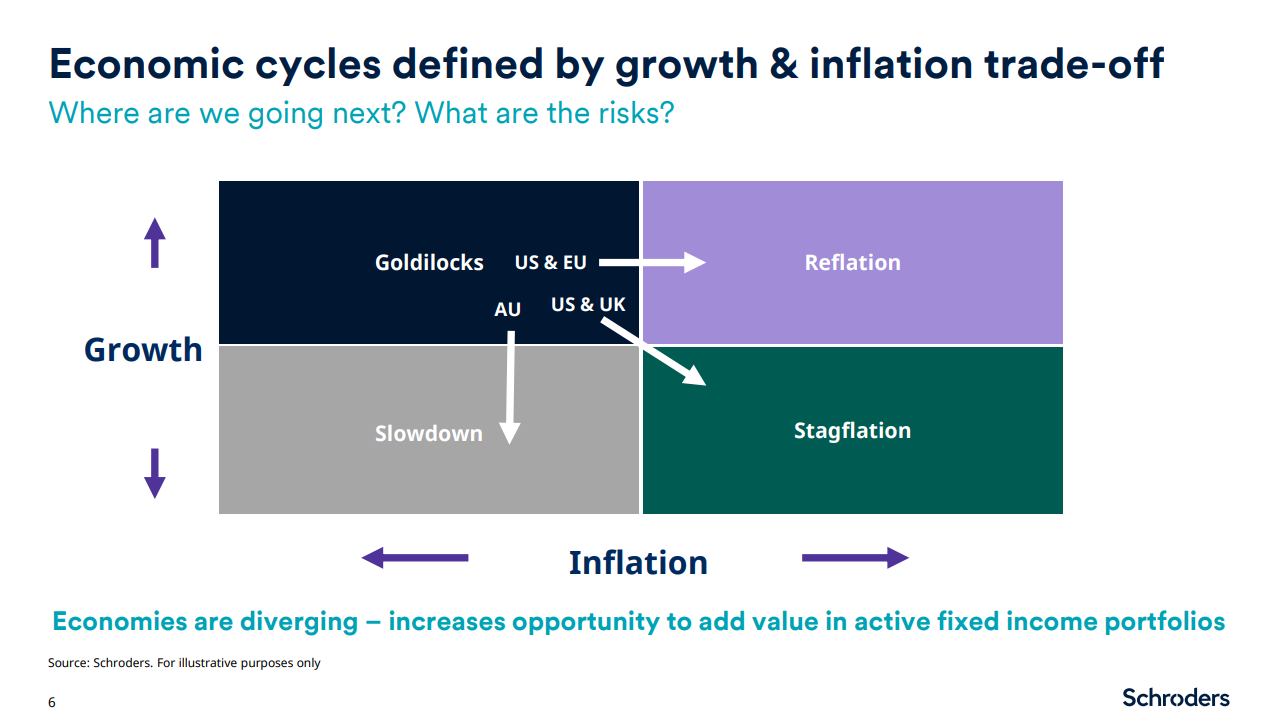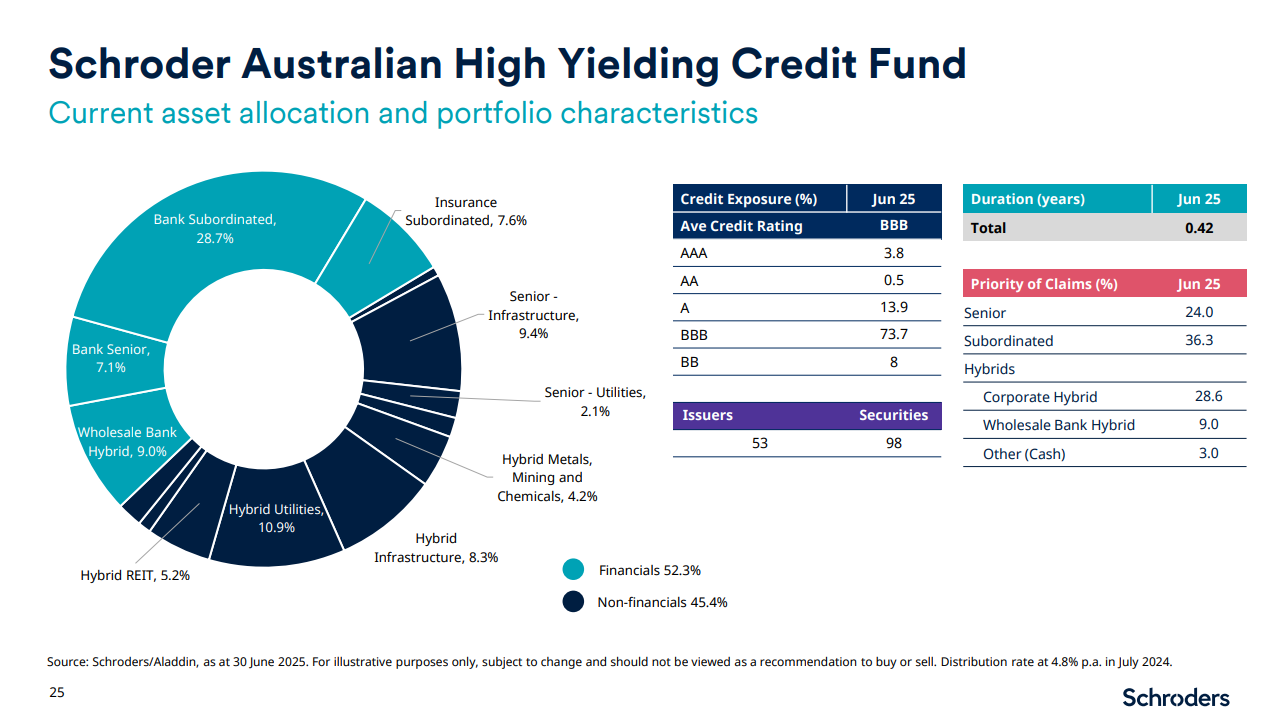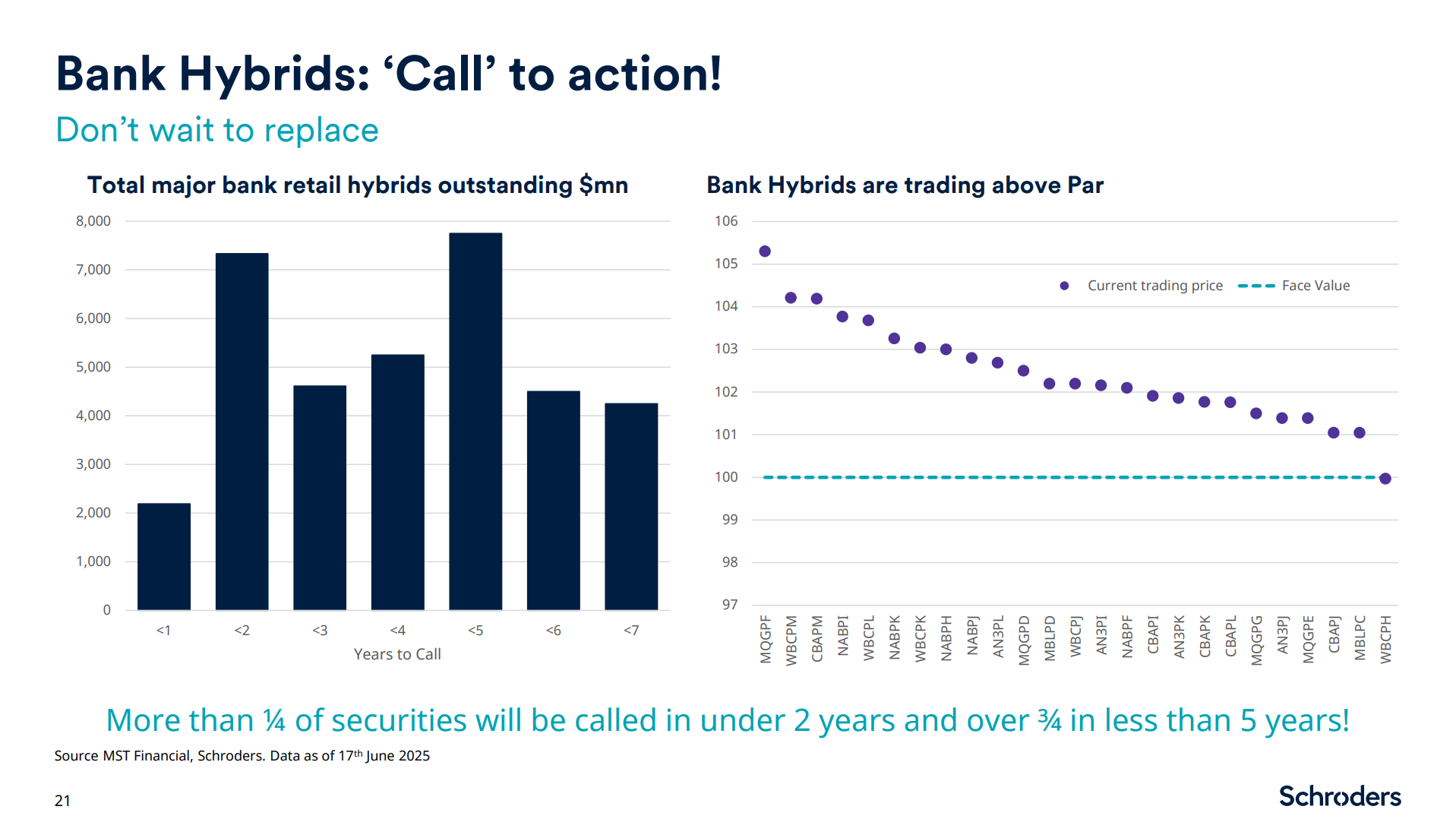Why sitting still could cost you in the new income regime
"By doing nothing now, you’re actually going to lose money," warns Sebastian Mullins, Schroders’ Head of Multi-Asset and Fixed Income.
That was one of the headline messages from the Schroders National Advisor Briefing in Melbourne last week, where Head of Multi-Asset and Fixed Income, Sebastian Mullins and fellow Fund Manager, Helen Mason, set out a clear case for action.
After a decade of healthy returns from term deposits and bank hybrids, the tide is turning. Term deposit rates are set to slide as the RBA moves to cut, while APRA’s phase-out of hybrids is happening faster than many realise.
Mullins argued that investors face a “new regime” for fixed income - or perhaps a return to the “old normal” - defined by (relatively) higher rates, higher volatility, and higher risk premia. In his view, sitting still in this environment is the real danger.
The solution lies in being active, diversified and selective, using frameworks like Schroders’ Value, Cycle, and Liquidity (VCL) process to pinpoint opportunities across geographies, sectors, and maturities.
Helen Mason’s session drilled down into one such opportunity: Australian credit. She highlighted the quality of the local market, dominated by top-rated banks, utilities and infrastructure assets, and why it can deliver attractive yields with lower volatility than equities or hybrids.
Together, they presented a joined-up thesis: global macro awareness plus targeted domestic credit exposure can help investors protect and grow income streams in a shifting rate landscape. Below is a summary of their respective presentations.
Sebastian Mullins - The cost of doing nothing
Mullins opened with a warning: “By doing nothing now you’re actually going to lose money.” With RBA rate cuts likely before year-end, term deposit yields could drop towards 3%, and the phasing out of hybrids will remove a key income source for retirees.

He framed the market backdrop as a “new regime” - not the post-GFC norm of low rates, but a return to (relatively) higher rates, higher inflation, and greater volatility. This shift is driven by structural forces: persistent fiscal spending on defence, supply chain security, income inequality, energy infrastructure, and demographics.
“There’s no political will to bring the debt down… so you have to grow your way out of it or inflate the debt away,” he argued.
For investors, the good news is that yields have risen sharply. Real yields on government bonds are now positive, and nominal yields on Australian and US debt sit at 4–5%, with a premium for corporate credit. But higher yields come with more volatility. Bond market swings, he said, are now at “astronomical” levels not seen since the GFC.
The traditional bond–equity diversification benefit has also broken down, with correlations now strongly positive.
“Now you hold fixed income for the income, not for the structural diversification benefit of the past 20 years.”
Navigating the global picture

Mullins’ current read: Australia and Europe are in “Goldilocks” territory - moderate growth and falling inflation - while the US faces stagflation risks from tariffs. Australia’s fiscal position and policy flexibility make it more attractive for both government bonds and credit, especially compared to tight US credit spreads.
Different cycles across regions mean selectivity matters. Schroders’ approach uses its Value–Cycle–Liquidity (VCL) framework:
- Value: Is the asset cheap or expensive versus history?
- Cycle: Where are we in the economic cycle, and how much risk is appropriate?
- Liquidity: Market technicals, policy settings, and investor positioning.
Positioning now
Mullins’ preferred plays include:
- Aussie credit for attractive spreads and rate-cut tailwinds.
- Front-end US Treasuries, avoiding longer maturities.
- European credit over US credit.
- Maintaining liquidity to deploy during volatility.
He highlighted the Schroder Absolute Return Income Active ETF (CBOE: PAYS) as an “all-weather” portfolio targeting cash +2.5% with low drawdowns, designed as a term deposit replacement. Its flexibility to move between credit, government bonds, and other liquid income assets has helped deliver better returns than term deposits with lower volatility.
Helen Mason – The opportunity in Australian credit
Mason began by contrasting the ASX 200’s 3.36% dividend yield (4.4% with franking) and lofty valuations - “CBA is on 30 times earnings” - with the yields available in domestic credit:
“Lower volatility, lower risk than equities… yields anywhere between 5-7.5% and you don’t need franking to achieve that".
The $1.1 trillion Australian credit market, she noted, is unusually high-quality, dominated by major banks, infrastructure, and utilities. Monopoly assets like ports, railways, and airports issue into this market, often at attractive yields. For example, AAA-rated Airservices Australia debt recently yielded around 5%.

Mason's portfolio approach, in the Schroder Australian High Yielding Credit Fund - Active ETF (CBOE: HIGH), actively rotates across this spectrum, using the same VCL lens.
Examples included selling Pacific National hybrids before earnings pressure, then buying back after yields spiked to 10% post–Liberation Day. She also favours selective euro-denominated Aussie bonds to capture spread opportunities.
Mason’s key warning was on hybrids: many trade above par but will be redeemed at $100, locking in capital losses for holders.
“You are going to make a guaranteed capital loss… the clock is ticking.”
With 40% of hybrids due to be called in under three years, Mason suggests that investors need to act now.

Her fund avoids gearing, structured credit, and private debt, focusing instead on high-quality, liquid assets with monthly distributions (currently 5.9%). In her words, the aim is “high returns without the volatility,” making Australian credit a compelling, if overlooked, income alternative.
The final word
Mullins and Mason’s messages dovetail neatly: the macro backdrop rewards active positioning, while Australia’s credit market provides a fertile, high-quality hunting ground for income. Both stress that now is the time to rotate away from expiring or eroding income sources and into diversified, actively managed portfolios capable of adapting to a new, and potentially long-lasting, investment regime.
4 topics
2 stocks mentioned
2 funds mentioned
1 contributor mentioned

